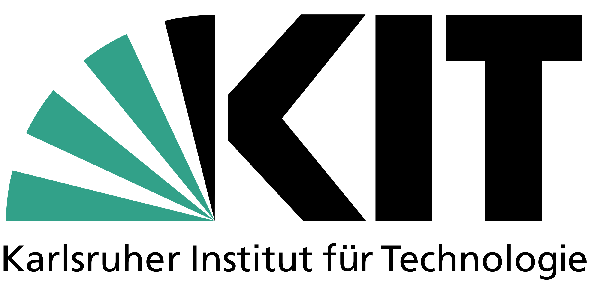4.0 low-tech building systems. BIM-based product-process innovation for corrugated cardboard prefabrication
DOI:
https://doi.org/10.19229/2464-9309/12142022Keywords:
industry 4.0, prefabrication, mass customization, cardboard architecture, emergency architectureAbstract
Construction production chains are facing a profound ecological and digital transformation to support the competitiveness and resilience of the sector against ongoing environmental and socio-economic challenges. In recent years, the development of digital technologies has opened the field to the possibility of transforming prefabricated building production facilities into highly integrated, controlled, environmentally and economically efficient Industry 4.0 systems. CARES research is part of the ongoing debate, developing and implementing an innovative production model of construction elements made of corrugated cardboard, based on the principle of product-process digitalization through the use of BIM tools, aimed at rationalizing the use of resources and reducing the environmental burden of the construction phase.
Downloads
Article Metrics Graph
References
Abanda, F. H., Tah, J. H. M. and Cheung, F. K. T. (2017), “BIM in off-site manufacturing for buildings”, in Journal of Building Engineering, vol. 14, pp. 89-102. [Online] Available at: doi.org/10.1016/j.jobe.2017.10.002 [Accessed 18 September 2022].
Agarwal, B. R., Chandrasekaran, S. and Sridhar, M. (2016), Imagining Construction’s Digital Future, Capital Projects and Infrastructure June 2016, McKinsey Productivity Sciences Center, Singapore. [Online] Available at: mckinsey.com/industries/capital-projects-and-infrastructure/our-insights/imagining-constructions-digital-future# [Accessed 18 September 2022].
Ban, S. and Keio University SFC Ban Laboratory (2010), Voluntary Architects Network – Making Architecture, Nurturing People – From Rwanda to Haiti, Inax Publishing.
Clyde & Co (2018), Embracing the Revolution – Legal and Industry Perspectives as Off-site Manufacturing Gains Traction, Innovation in Construction Report. [Online] Available at: clydeco.com/clyde/media/fileslibrary/Reports/PC_Off-site_Manufacturing_Report.pdf [Accessed 18 September 2022].
Distefano, D. L. (2019), Precast Lightness – Cardboard Architecture Responds to Emergency – Design, Prototyping and Testing of a High Performance Emergency House-kit, PhD Dissertation, DICAR, University of Catania. [Online] Available at: dspace.unict.it/handle/10761/4195 [Accessed 18 September 2022].
Du, Q., Bao, T., Li, Y., Huang, Y. and Shao, L. (2019), “Impact of prefabrication technology on the cradle-to-site CO2 emissions of residential buildings”, in Clean Technologies and Environmental Policy, vol. 21, issue 7, pp. 1499-1514. [Online] Available at: doi.org/10.1007/s10098-019-01723-y [Accessed 18 September 2022].
Ellen MacArthur Foundation (2013), Towards the Circular Economy – Economic and business rationale for an accelerated transition, vol. 1. [Online] Available at: emf.thirdlight.com/link/x8ay372a3r11-k6775n/@/preview/1?o [Accessed 18 September 2022].
European Commission (2019), Horizon Europe – The Next EU Research & Innovation Investment Programme (2021-2027). [Online] Available at: ec.europa.eu/info/sites/default/files/research_and_innovation/strategy_on_ research_and_innovation/presentations/horizon_europe_en_investing_ to_shape_our_future.pdf [Accessed 08 October 2022].
European Parliament (2020), Next Generation EU – A European instrument to counter the impact of the coronavirus pandemic. [Online] Available at: europarl.europa.eu/RegData/etudes/BRIE/2020/652000/EPRS_BRI(2020)652000_ EN.pdf [Accessed 08 October 2022].
Galluccio, G. (2019), Processi digitali avanzati per l’industria delle costruzioni 4.0 – BIM, digital manufacturing e prefabbricazione nell’edilizia in Cold-Formed Steel, Aracne, Canterano.
Giglio, F. (2018), “Low Tech e materiali non convenzionali – Misura, Tempo, Luogo | Low Tech and unconventional materials. Measure, Time, Place”, in Techne | Journal of Technology for Architecture and Environment, vol. 16, pp. 122-130. [Online] Available at: doi.org/10.13128/Techne-22987 [Accessed 18 September 2022].
Global Alliance for Buildings and Construction, International Energy Agency and the United Nations Environment Programme (2019), 2019 Global Status Report for Buildings and Construction – Towards a zero-emissions, efficient and resilient buildings and construction sector. [Online] Available at: iea.org/reports/global-status-report-for-buildings-and-construction-2019 [Accessed 18 September 2022].
Guo, S., Zheng, S., Hu, Y., Hong, J., Wu, X. and Tang, M. (2019), “Embodied energy use in the global construction industry”, in Applied Energy, vol. 256, 113838, pp. 1-12. [Online] Available at: doi.org/10.1016/j.apenergy.2019.113838 [Accessed 18 September 2022].
Gusmerotti, N. M., Frey, M. and Iraldo, F. (2020), Management dell’economia circolare – Principi, drivers, modelli di business e misurazione, FrancoAngeli, Milano.
Jodidio, P. (2015), Shigeru Ban – Complete Works 1985-2015, Taschen, Slovakia.
Latka, J. F. (2017), Paper in architecture – Research by design, engineering and prototyping, Architecture and the Built environment, n. 19. [Online] Available at: journals.open.tudelft.nl/abe/article/view/1875/2292 [Accessed 18 September 2022].
Lekan, A., Clinton, A., Fayomi, O. S. I. and James, O. (2020), “Lean thinking and industrial 4.0 approach to achieving construction 4.0 for industrialization and technological development”, in Buildings, vol. 10, issue 12, article 221, pp. 1-27. [Online] Available at: doi.org/10.3390/buildings10120221 [Accessed 18 September 2022].
Ministero dello Sviluppo Economico (2021), Piano Nazionale di Ripresa e Resilienza. [Online] Available at: governo.it/sites/governo.it/files/PNRR.pdf [Accessed 08 October 2022].
Oesterreich, T. D. and Teuteberg, F. (2016), “Understanding the Implications of Digitisation and Automation in the Context of Industry 4.0 – A Triangulation Approach and Elements of a Research Agenda for the Construction Industry”, in Computers in Industry, vol. 83, pp. 121-139. [Online] Available at: doi.org/10.1016/j.compind.2016.09.006 [Accessed 08 October 2022].
Wang, M., Wang, C. C., Sepasgozar, S. and Zlatanova, S. (2020), “A Systematic Review of Digital Technology Adoption in Off-Site Construction – Current Status and Future Direction towards Industry 4.0”, in Buildings, vol. 10, issue 11, article 204, pp. 1-29. [Online] Available at: doi.org/10.3390/buildings10110204 [Accessed 08 October 2022].

Downloads
Published
How to Cite
Issue
Section
Categories
License
Copyright (c) 2022 Rosa Romano, Elisa Belardi, Paola Gallo, Dario Luigi Distefano

This work is licensed under a Creative Commons Attribution 4.0 International License.
This Journal is published under Creative Commons Attribution Licence 4.0 (CC-BY).
License scheme | Legal code
This License allows anyone to:
Share: copy and redistribute the material in any medium or format.
Adapt: remix, transform, and build upon the material for any purpose, even commercially.
Under the following terms
Attribution: Users must give appropriate credit, provide a link to the license, and indicate if changes were made; users may do so in any reasonable manner, but not in any way that suggests the licensor endorses them or their use.
No additional restrictions: Users may not apply legal terms or technological measures that legally restrict others from doing anything the license permits.
Notices
Users do not have to comply with the license for elements of the material in the public domain or where your use is permitted by an applicable exception or limitation.
No warranties are given. The license may not give users all of the permissions necessary for their intended use. For example, other rights such as publicity, privacy, or moral rights may limit how you use the material.


















































































